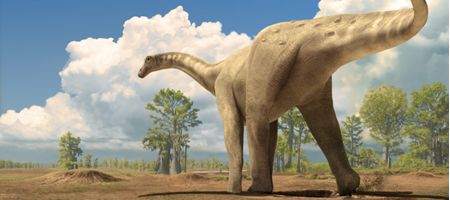A team of Spanish scientists says it’s demolished the main evidence that dinosaurs were cold-blooded.

For a long time, scientists assumed that they were coldblooded, or ectothermic, because certain features of their bones known as lines of arrested growth (LAG) were also found in cold-blooded creatures today.
However, it seems that they hadn’t done their homework. In a new study of the bones of around a hundred ruminants, a Catalan team of scientists say they’ve discovered that warm-blooded creatures have them too.
LAGs are seen in bone sections as dark rings, similar to those of tree trunks. The rings are formed – both in animals and in trees – when poor seasonal conditions inhibit the organisms growth.
Their presence in bones was, until now, considered to be the clearest indicator of ectothermy, as the seasonal arrest of growth was assumed to be caused by an animal’s inability to maintain a more or less constant body temperature at these times.
The new discovery came as something of an accident.
“The study we have carried out is very powerful, both in terms of the amount of material and the diversity of species with which we worked, but we did not design it to find a response to the thermophysiology of dinosaurs,” says Meike Köhler of the Catalan Institute of Palaeontology in Barcelona’
“We sought to better understand the physiology of extant mammals and how the environment affects them – how their growth changes as a result of external temperatures, rain and the availability of food and water.”
But the team soon realised that their observations refuted the main argument for an ectothermic physiology in dinosaurs. In fact, some previous studies had already questioned this hypothesis, and some scientists were already questioning whether LAGs not necessarily indicators of ectothermy.
“It may seem surprising that until now there has not been a similar systematic study to prove or disprove whether it is only ectotherms that leave these marks in their bones during growth,” says Köhler.
“In fact, there are so many things we do not know that science does not always advance in a linear way. The ideas somehow had long been wandering among the scientific community, but the work we have published organizes them and bases them on data.”






